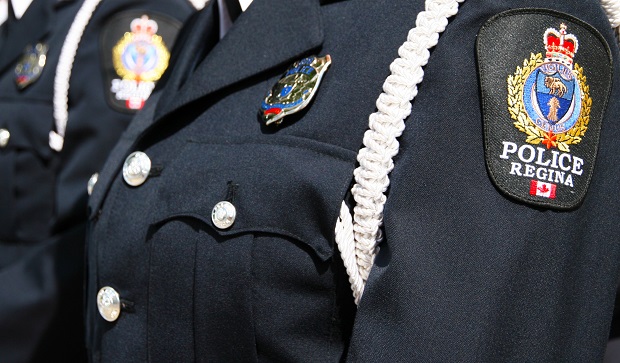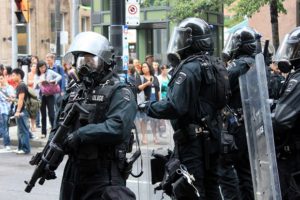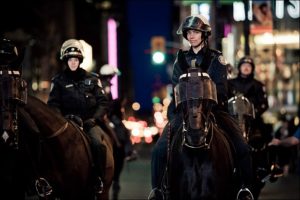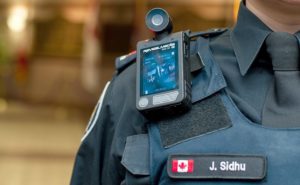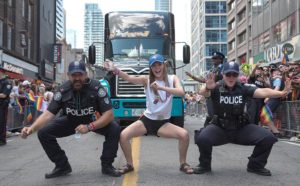The boiling anger in the United States over police use of force and charges of racism and racial bias can’t help but spill over into Canada and its effect has been profound as we wrestle with our own issues.
True, the US and Canada appear to be similar but our challenges in policing and their causes remain distinctly different. In the aftermath of any negative incident involving the police, public sentiment drops and accusations fly in the wake of unanswered questions and diplomatic rhetoric from police brass.
Bridging the communication gap
Respecting due process, impartiality and examination of the facts prior to commenting, police cannot and will not speak too many of the questions posed by the public and the media especially where an incident is under investigation. Obviously, this is when answers are most needed and the window of opportunity that would quell anger stays closed.
Understandably the public is left exasperated and demanding answers to square the circle. Policing organizations are silent but are well aware of the lack of trust and confidence expressed by the public.

In the field, the rank and file show up for their shift and go about their job with an added weight to their duties. But as many recent headlines are jarring, can the public be so far off center and fail to recognize the commitment by those who police our communities? In the same context, can police be so detached from the public that they cannot empathize with the public’s fears? Maybe the divide has less to do with empathy and more to do with what feels like a stalemate – no one knows how to fix it or where to start.
Bridging the communications gap between the public and police is difficult for many reasons but it must start with trust-building and honest dialogue before, not after, a serious incident. Truthfully, police explaining policing is tenuous at best – you can select the most articulate officer with most exemplary soft skills and a perceived bias will still emerge. It doesn’t help that the inherent language of authority is loaded with negative connotations and that the policing ethos encourages shouldering – not sharing – the weight.
What results is an impervious barrier.
Even if the communications were fluid, the public is unlikely to hear the truth: the horrors of policing, the struggle with stress and depression, the burden it has placed on their families and how their chosen career is not what they thought it would be, but still there is nothing they would rather do. Moreover, you wouldn’t hear about irreconcilable policing dichotomy; the person they arrested today was the same person they served and protected yesterday.
Accepting reality
However, truly progressive police organizations are recognizing the importance of the confidence of the public and do strive to find innovative ways to educate, communicate and explain processes to the public. But it’s not only up to the policing organizations.
Communities need to accept the reality of operational challenges of policing and abandon the role of armchair judge and jury while we demand super-human capabilities of officers – to act as psychiatrists, psychologists, social workers and mediators, to absorb the operational stress and resource constraints and the psychological impacts of the worst of calls.
It’s easy to critique and replay the video over and over, but the expectation of police perfection is real and results in charges of hyper-masculine aggression and insufficient police training – it’s either lacking, out-dated, militarized or a deficient in other means.
While training criticisms may have merit, there are functional aspects of human behaviour that no amount of training can mitigate. Since training is scenario-based, controlled and with managed consequences, it is impossible to recreate all environmental variables, physiological reactions and human behaviours. Woven into this are increasingly common behaviours, such as excited delirium, mental health disabilities, and narcotic-induced states, and they present a massive challenge in crisis management.
A recent incident in Toronto was compared to that of James Forcillo’s handling of his interaction with Sammy Yatim’s, by writer Andrew Mitrovica in a Toronto Star article, and states:
“The cops kept their cool, working together – as they’ve no doubt been trained – to disarm a kid who was wielding a knife not that much different from the one Yatim was flashing on the streetcar on that fateful morning. They resolved the tense situation without firing a shot despite the fact that, arguably, this kid posed more of a danger to the police and public than Yatim did. In the end, I can’t help but think that if this group of police officers – who, like Forcillo, swore an oath to serve and protect the public, but, unlike Forcillo, responded so differently, wisely, calmly and professionally to another disturbed young man in distress – had been there when Sammy Yatim needed help, he might be alive today, getting the help he so desperately needed.”
The expectation that these incidents are all alike, can be equally compared and can be assessed by an untrained bystander, are common but ignores the reality. It goes without saying, the most valued officer is the one who is able to achieve the desired result with the least risk or injury to all parties while maintaining the confidence of the public. But in a job where stress is insurmountable and there is little reciprocity for kindness, how realistic is this? Yes, they chose this job but it is important to consider that without that individual in that job, the job still remains – and it is a job that only a human can do.
In the 2014 Ontario Human Rights Commission report on mental health disabilities and use of force and the 2016 Ontario Ombudsman’s report, A Matter of Life and Death, on improved crisis intervention in policing both recommend a revised use of force model, an emphasis on de-escalation and improved training. Shifting from behaviour causality to a generic ‘people in crisis’ profile and de-escalation as core training makes sense. However, the theoretical obscures the practical, which is often the case in reports that are conducted without the collaboration of subject matter experts and those who operationalize these methods.
In the Ombudsman’s report, there were no recommendations to maintain program-specific capabilities and resources in crisis management, such as where community-level police should deal with community-level calls for service and that specialized units remain as such, preserving valuable knowledge, intelligence, and relationships.
(I had requested clarification on the formulation of the recommendations and involvement of subject-matter experts from the Ombudsman’s office and did receive a reply, albeit vague.)
Instead, the report hones in on the simplification of the use of force model and adoption of a linear model (even though it is represented as a circle), rather than a continuum of options. This presents an issue. Linear models only work well with repeatable processes, such as event and selection-based actions, and do not account for complex human behaviours in conflict scenarios; in fact, they are rarely effective except in the instance of communicating to non-experts.
A proactive approach
A by-product of this simplification is the inference of subjective standards – canned, acceptable responses of the least or minimal amounts of force. If expert observation and response capabilities of an officer are stifled, a conundrum of negotiation versus authority and liability for judgment and decisions made under stress, quickly emerge.
The more proactive approach is objective reasonableness that empowers and entrusts the officer’s capabilities and judgment in the elastic dynamic of crisis management.
Considering this, maybe the use-of-force model has seen its day and it’s time to re-scope the entire approach and evolve to a crisis management model that includes a use of force component with other options around de-escalation and specialized skills support.
Assessing and responding become cyclic and iterative, as the scenario can change at any time and risk mitigation becomes the driving force. When considering training improvements, conceptualizing the many fixed factors (perceived mental state, physical capabilities, weapons or their possible concealment, etc.) and fluid factors (emotional state, passive and active resistance, willingness to sustain an injury, etc.) is impossible.
The formulation of responses ranging from strategic (diffusion and de-escalation) to tactical and defensive (less-than-lethal and counter force) must be agile and must respond to the factors related to capability, intent, means and opportunity.
A person’s intent (reaching for their pocket, verbalizations, body posture or rigidity, etc.) can be obvious or subtle but suppression, before they are acted out, is the goal in any case.
For these reasons, the context of police training can’t help but be flawed; there is no way counter mechanism to prepare for every encounter nor is there a means to temporarily disconnect human behaviours or physiological responses.
On top of this, cumulative stress, multiple-trauma, post-traumatic stress disorder or other physical states, such as fatigue, have a tremendous impact. While training scenarios are designed to mitigate some this by simplifying steps and actions for rapid enactment and enabling assessment that establishes control in the safest manner, the functional reality of human physiology remains: under pre-existing or situational stress humans lose the ability to utilize certain capacities, such as fine motor skills.
The power of news headlines
Clearly, there’s an educational component to the much-needed communications strategy.
Although most Canadians will have few interactions with police in their lifetime, it is confounding that while the majority of these interactions are not negative the growing sentiment towards police is. The power of news headlines and social media is formidable and it will feed the negative perception of police from hundreds of miles away.
Because of this, the idea of ‘abuse of authority’ and “excessive use of force” by police exists both objectively and subjectively with the public and must be dealt with as valid realities. As much as there is a policing dichotomy, there is also a dichotomy to be reconciled by the public: a generational mythology and expectations of police contrasted by glaring media images, all fuelled by the absence of communication and information.
Policing is not federated, with the exception of the RCMP, for a reason and its centralization have failed over and over in history; it must be treated as a core service that establishes and maintains the quality of our communities. These communities have unique needs and they form multitudes of societies across our country and those needs cannot be met through borrowed best practices – best practices work at the procedural level not at the strategic or legislative.
If we allow the public to ignore the necessary authoritarian role and realities of policing and the police organizations refuse to adopt innovative community and public communications, the divide will widen.
The public will hold firm to their expectations, expressing anger and dismay when they are not met and frontline officers will continue to operate below capacity but to super-human expectations placed upon them. And the badge will only get heavier.
Valarie Findlay is a research fellow at the Police Foundation (USA) and an expert in cyber-security for policing, military and government departments. She holds a Masters in Terrorism Studies from the University of St. Andrews. She can be contacted at vfindlay@humanled.com .Website: http://www.humanled.com

